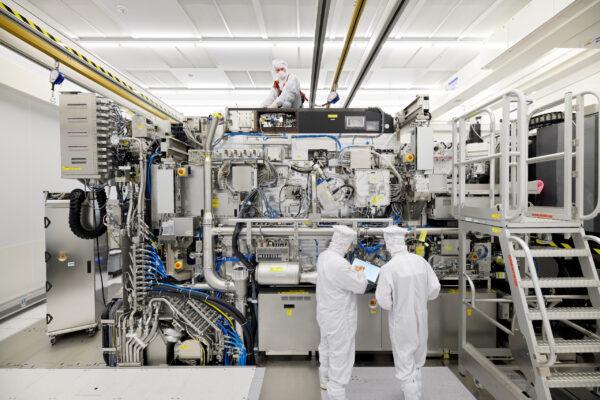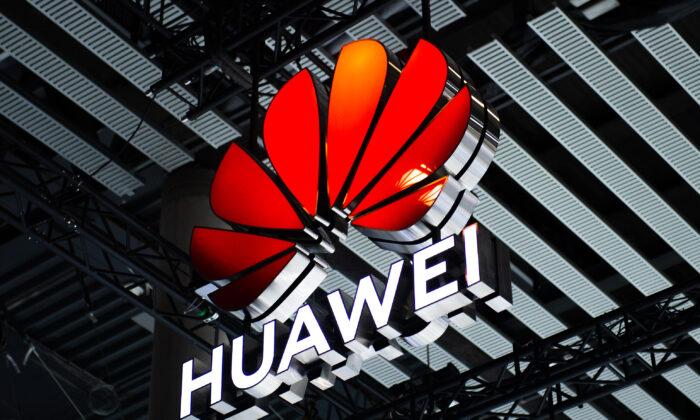The U.S. Department of Commerce has vowed to protect national security in the wake of China’s reported breakthrough in manufacturing a 7-nanometer chip without access to advanced equipment.
“Let’s be clear: export controls are just one tool in the U.S. government’s toolbox to address the national security threats presented by the PRC. The restrictions in place since 2019 have knocked Huawei down and forced it to reinvent itself—at a substantial cost to the PRC government,” a Commerce Department spokesperson told The Epoch Times in an emailed statement, using the acronym for the regime’s official name, the People’s Republic of China.
The spokesperson added that the department is working on obtaining the “character and composition” of the purported 7-nanometer chip.
“We are continually working to assess and, when appropriate, update our controls based on the dynamic threat environment, and we will not hesitate to take appropriate action to protect U.S. national security,” the spokesperson said.
China hailed Huawei’s latest move as a “triumphant return” and a defeat of U.S. export controls.

A Blow to the US?
Since the Trump administration, the United States has sought to curb China’s access to advanced chip manufacturing capabilities, a key driver for Chinese communist leader Xi Jinping’s plans for military and economic dominance.News of China’s success at the 7-nanometer level, an indicator of computing power, has been considered by some as a shock and heavy blow to the United States.
But others say the fanfare is overrated. After all, China broke the 7-nanometer barrier five years after the global leader, Taiwan Semiconductor Manufacturing Company (TSMC). TSMC has achieved mass production of 3-nanometer chips—the world’s most advanced chip. The new iPhone 15 to be released later this month is widely expected to be the first adopter of this chip.
Ray Yang, a semiconductor industry veteran and a director at the Industrial Technology Research Institute (ITRI), an influential think tank in Taiwan, is one of them.
While a 7-nanometer chip is a milestone achievement, without access to advanced equipment and process technology, Huawei’s development will stall, Mr. Yang told The Epoch Times.
He said that new developments will keep happening as Apple and Huawei’s domestic competitors using American Qualcomm chips progress to faster and more powerful chips.
“But Huawei will stop at 7-nanometer. There’s no hope of any progression,” he said.
China found a replacement for a blocked technology, said James Lewis, the director of the Technology and Public Policy Program at the Center for Strategic and International Studies think tank. This is a natural response to export controls, he said, and it doesn’t mean that U.S. export controls have failed.
“They are not realizing that [export controls] have a shelf life,” Mr. Lewis told The Epoch Times, referring to those opining that Huawei’s new chip represents a blow to U.S. efforts to block the technology.
“Export controls are really effective for the first couple of years. And then people figure out how to get around them.” He likened the dynamic to that of a tennis game.
In this case, he said Huawei was quick to hit the ball back. “Given how interconnected the economies are, life is much shorter than it used to be.”

Intellectual Property Theft Suspected
China making 7-nanometer chips is not new. In July 2022, SMIC manufactured 7-nanometer Bitcoin mining chips. The latest smartphone chip is more sophisticated than that.Mr. Yang believes that SMIC used a deep ultraviolet (DUV) lithography chipmaking machine, which was not under export controls until this year and is capable of making 7-nanometer chips, to make the chip for Huawei.
As the principal investigator of a semiconductor cross-disciplinary group for Taiwan’s chief science agency, Mr. Yang follows global patents closely.
He highly suspects that some intellectual property infringement was involved in the process technology SMIC used to produce the 7-nanometer chip. One way to verify this theory, he said, is to see whether Huawei would export its new smartphone model to Europe and the United States. If the technology was stolen and Huawei were to export the new phone, it would incur significant legal risks.
Mr. Lewis also said he wouldn’t be surprised if SMIC achieved the latest 7-nanometer chips through industrial espionage.
Nowhere to Go
Without access to extreme ultraviolet lithography (EUV) machines, the world’s most advanced chip-making equipment manufactured exclusively by ASML, China’s next step to 5-nanometer chips will be much more difficult. The export of this technology to China has been restricted since 2019.Mr. Yang said the Chinese Communist Party (CCP) will continue to try to manufacture 5-nanometer and 3-nanometer chips with DUV equipment, as their access to the higher-grade EUV systems is blocked.
The expert likened the chip race to a mountaineering race. Those with advanced oxygen tanks, tents, and other equipment can safely reach the summit and return. The success rate for those without proper equipment would be much lower, making the exercise commercially unsustainable.
According to him, the yield rate—the proportion of quality chips out of all chips cut from a silicon wafer—for DUV-made 5-nanometer chips could be as low as 10 to 20 percent. The yield rate for DUV-made 3-nanometer chips might be zero.
But such low yield rates won’t deter the CCP, given its thirst for advanced chips for military applications. Mr. Yang expects the regime to continue to try to manufacture 5-nanometer chips, which are necessary for a range of military technology, including fighter jet components and supercomputers that help improve aircraft designs.

Next Step for Export Control
Mr. Lewis said the United States’ first step is to find out how the Chinese made the 7-nanometer smartphone chip. Then, the administration should review its current export controls and determine what could be done to strengthen them.“I’m going to withhold comment on the particular chip in question until we get more information about precisely its character and composition,” he said, responding to a question whether the new chip meant a violation of the U.S. sanctions or that the export controls had failed.
“And from my perspective though, what it tells us, regardless, is that the United States should continue on its course of a ‘small yard, high fence’ set of technology restrictions focused narrowly on national security concerns, not on the broader question of commercial decoupling,” he added.
Over the years, the “small yard” appears to have expanded.
In May 2020, the Trump administration blocked Huawei from purchasing chips from global manufacturers. Seven months later, the United States added SMIC to a trade blacklist to block SMIC’s access to advanced chip technology.
What goes from here?
Mr. Yang said one likely next step for the United States would be to control advanced packaging technology. This process stacks chips up to increase computing power. For example, instead of having a 3-nanometer chip, one can stack 7-nanometer chips together to get to a similar level of computing power.
Special technology is necessary to make these stacked chips work as one. So when the CCP cannot possess advanced manufacturing equipment or has no proper license for such technology, one way out could be to use advanced packaging to achieve the same results.






